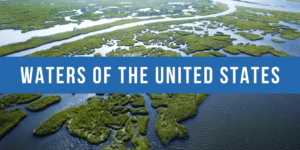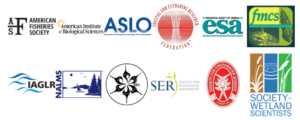


The Work Continues on the 50th Anniversary of Earth Day
Dear Members of the American Fisheries Society Family, Fifty years ago, in the backyard of the American Fisheries Society’s (AFS), the Potomac River was filled
American Fisheries Society Family of Websites:
Read our five journals and Fisheries magazine
Find thousands of unpublished agency reports and other information
Join us in Honolulu in 2024
Find an AFS Unit near you or in your area of specialty
Learn how to communicate the effects of climate change on fisheries
Summer internships for high school students
Explore our initiatives to increase diversity in the Society and in the fisheries profession
Find fisheries science products and services
Quick answers to common questions



Dear Members of the American Fisheries Society Family, Fifty years ago, in the backyard of the American Fisheries Society’s (AFS), the Potomac River was filled



EPA’s Science Advisory Board (SAB) sharply criticized the agency’s recent decision to narrow the definition of the Waters of the US (WOTUS) under the Clean







American Fisheries Society ● Association for the Sciences of Limnology and Oceanography Coastal and Estuarine Research Federation ● Freshwater Mollusk Conservation Society International Association for







News for Immediate Release September 12, 2019 Contact: Marnee Banks, 202-639-8727 x19, [email protected] Conservation Organizations Oppose EPA’s Move to Finalize Rollback of Clean Water Protections Groups







News for Immediate Release April 15, 2019 Contact: Kristyn Brady, 617-501-6352, [email protected] Hunting and Fishing Groups File Final Comments Opposing Clean Water Rollback 14 national







American Fisheries Society 425 Barlow Place, Suite 110, Bethesda, Maryland 20814 Telephone: 301-897-8616 www.fisheries.org The Wildlife Society 425 Barlow Place, Suite 200, Bethesda, Maryland 20814


April 10, 2019 Mr. R.D. James Assistant Secretary of the Army for Civil Works U.S. Army Corps of Engineers 441 G Street, N.W. Washington, D.C.







Waters of the US (WOTUS): What You Need to Know About the Rule and How to Take Action from fisheries on Vimeo. This webinar was


American Fisheries Society • Association for the Sciences of Limnology and Oceanography • Coastal and Estuarine Research Federation • Freshwater Mollusk Conservation Society • International







December 21, 2018 Andrew Wheeler, Acting Administrator Environmental Protection Agency 1200 Pennsylvania Avenue NW Washington, DC 20460 R.D. James Assistant Secretary of the Army (Civil

